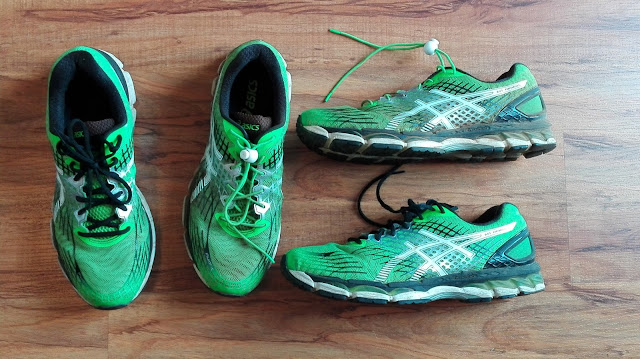It has always been thought that in order to win Comrades you need to feed off the bunch (a bus for elite
athletes). Comrades is too a long race to do it on your own. The other myth was
that you need to do as many long run as possible and another was that you need
to training on the terrain that you’ll be racing on i.e if you going to be
racing on asphalt, then your training runs need to be on asphalt.
All of the above where dispelled by Alberto Salazar.
When Alberto Salazar lined up for the 1994 Comrades Marathon he had come out of
retirement and hadn’t run a single race in 5 years. Despite boasting a 2:08
marathon time, he’d never raced beyond the distance. In preparing for the
Comrades Marathon he did one 65km run on his treadmill, in fact all of his long
runs where done on a treadmill and were never further than 30km (he clocked 200km per week). When lining up
for the race he had all intentions of winning the race and not just being competitor. These are his own words ‘I wouldn’t be here if I didn’t think I could win …
the race is in the hands of God’.
This
is how the 1994 race unfolded.
At
the starting line were Charly Doll 1993 champion, all time Comrades great Bruce
Fordyce, Ironman and former para-trooper Nick Bester, Two Oceans record holder
Thompson Magawana and the young effervescent Theo Rafiri of Rockies. Yes it was a very competitive
field. In typical style, the “TV runners” or “Rabbits” set out first while the
gold contenders sat in the pack getting out of Durban.
By
the time they got to Westville there were two distinct buses the “Bester bus”
which included Thompson Magwana and “Fordyce bus” slightly behind. Ahead of
them was Philimon Mogashane (former gold medalist). By the time they got to Cowies
Hill Mogashane was still leading. Getting out of Pinetown Dirkie Moolman (a
mountain running expert from Escout) was ahead, he crested Fields Hill first, 1 minute ahead of Alberto Salazar.
At
the bottom of Botha’s Hill Salazar
started catching up with Dirkie Moolman and he crested Botha's Hill first, he went through
half way in just under 2:45
I
guess everyone was waiting for Salazar to crash, after all he was now in
uncharted territory beyond the 42 km mark, but he did not. He devoured the mighty
Inchanga (with a 3:45 minute lead time) like a man possessed and showing no signs of
fatigue. He went through Cato Ridge and
Camperdown Village and crested Polly Shorts without any challenger insight. In
Bruce Fordyce's famous words “Whoever
crests Polly Shortts first will win the up run” and so he did breasting the
tape in a time of 5:38:39.
 |
| Alberto Salazar at Inchanga with 39 km to go. |
Take
aways from the above.
1. In
order to do well at Comrades (aiming for a win or “just a finish”) you need to
run fast, fast over shorter distances i.e. 5km, 10km, 21km and standard
marathon. Salazar’s personal bests include:
o
5 000 meters 13:11
o
10 000 meters 27:25:
o
Marathon 2:08:13
There’s a reason why Rand Athletic Club (RAC), one of the biggest and oldest
clubs in South African, hosts a 10km run just two weeks before Comrades
Marathon and that is to “fine-tune” your body for the journey between Durban
and Pietermaritzburg. Urban legend has it that if you couldn’t run the RAC 10km
under 37mins you were better off staying home and watching the race on TV or
better yet seconding the other club runners who had run sub 37 mins.
2. Do
not do too many long runs, now this is a tricky one. How many is too many? I
don’t have an answer to that, however what is important is that Long Slow
Distance (LSD) should be exactly that, they should be run at a slow pace and
should not be confused with racing or fartleks. More often than not we see
runners week in week out racing marathons and failing at comrades (I too have
fallen victim to that, numerous times), it is because the body has not been trained
to run at anticipated Comrades race pace.
3. Lastly,
do not shy away from training on different terrain. asphalt is probably the
most common yet unforgiving that most runners train and race on. Go run on
grass either on a golf course, grass track or a parkrun, run on gravel or tartan. Most Kenyans do their training on gravel even the famous Kamariny Stadium has a gravel track, it is the unevenness of terrain
that makes them strong and not prone to injuries. I am not a fan of treadmill
running and only run on it when there’s inclement weather and won’t run longer
than 40mins.
 |
| Kenyan runners training in the famous Kamariny stadium on a gravel track |











